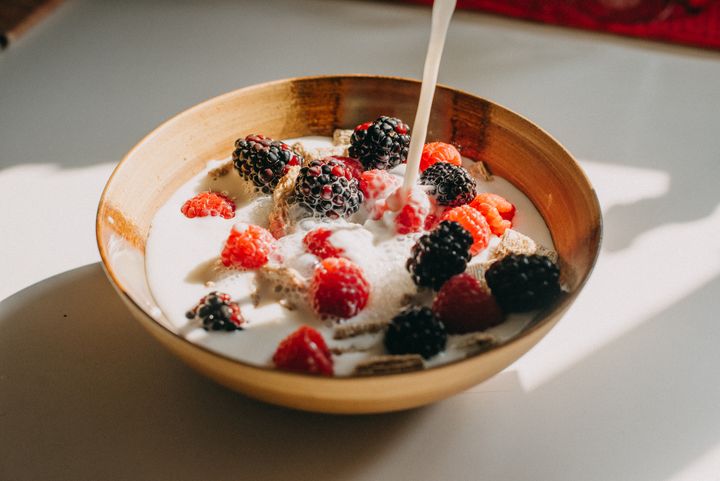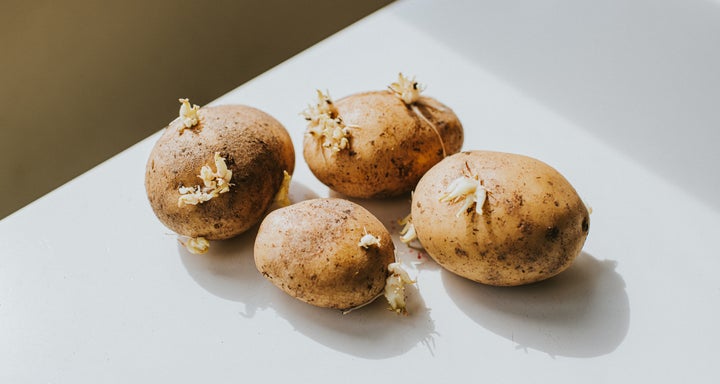
How regularly do you pour unused milk down the sink, throw away limp vegetables and discard soft fruit? The answer is probably far too often.
In the UK, we throw away 6.6 million tonnes of household food waste a year, according to the environmental charity WRAP, and almost three quarters of that could have been eaten.
Supermarket chain Morrisons has announced a new policy to help tackle the problem. From the end of January, the retailer will replace “use-by” dates with “best before” dates on 90% of its own-brand milk and will encourage customers to use a “sniff test” to check the quality before chugging.
A sour aroma or curdled consistency is a sign the milk has been spoiled, the shops says, and a spokesperson for the Food Standards Agency (FSA) has confirmed a “best before” label is fine with milk.
Milk aside, we could all be doing more to tackle the problem of food waste – and save ourselves money on the weekly shopping bill in the process.
In general, “use-by” labels are used for safety purposes while “best before” labels indicate when a food’s quality may decline.
The FSA warns against eating food past the use-by date as it could be unsafe to eat or drink, even if it has been stored correctly and looks and smells fine.
However, you can afford to be a little less rigid with “best before” dates, or fresh fruit and veg that perhaps isn’t marked with a date at all.
The team at FoodCycle are pros at this. The charity uses surplus food to create meals for those at risk of food poverty or loneliness. In 2020, they saved 359 tonnes of food that may have otherwise been wasted. They never use food past its “use-by,” but they do utilise ingredients that “may be looking at little less than perfect or could be passed the ‘best before’ date”.
“The main ways to check if something is still good to go is by giving it a visual check,” regional manager Alex Hatherly tells HuffPost UK. “You obviously don’t want any mould or rotting and you want to check that packaging is still in tact.”
Below, Hatherly has provided some tests you can conduct on everyday foods to see if they’re still good to eat.
Bread
The Squeeze test – give it’s a squeeze to check to see if it still soft, also check for any signs of mould. If it is a bit stale, sprinkle it with water and pop it in the oven for two to three minutes to help freshen it up.
Fruit
Most fruit can still be used even if it’s soft (as long as it doesn’t have any signs of mould of decay), some good ways to use up soft fruit would be to stew it, turn it in to a crumble, make a sauce or cake or mix it in with your porridge.
Potatoes
If potatoes are sprouting, you can just take out off the sprouts but don’t eat or use green potatoes. If you find yourself with left over potatoes or extra potatoes, you can pre-prep roast potatoes. Par boil, leave to cool and then put them in the freezer and use to make roasties, straight from the freezer – you could make potato wedges or chips in the same way too.

Eggs
Float test – put an egg in a deep bowl of water, if it floats it’s not good to eat, if it sinks it is still fresh enough to cook with. Please note that the Food Standards Agency advice is that eggs should not be used past the ‘best before’ date unless fully cooked.
Garlic or ginger
After a while it might start to go soft, so before it’s completely wasted, chop it up and freeze in ice cube trays and then they can be used straight from the freezer.
Pasta and tinned goods
These items can be used up to three years after their ‘best before’ date, just make sure the packaging is still intact and that cans are free from dents.